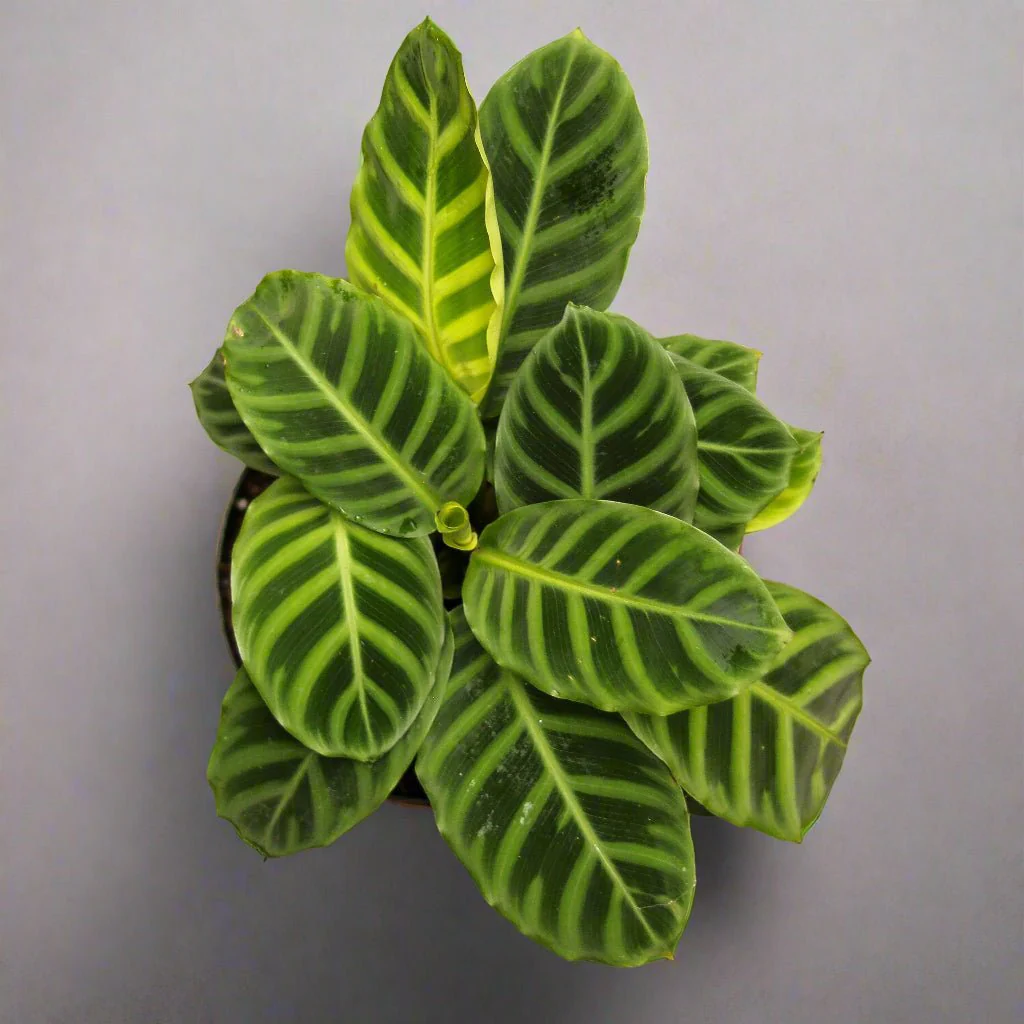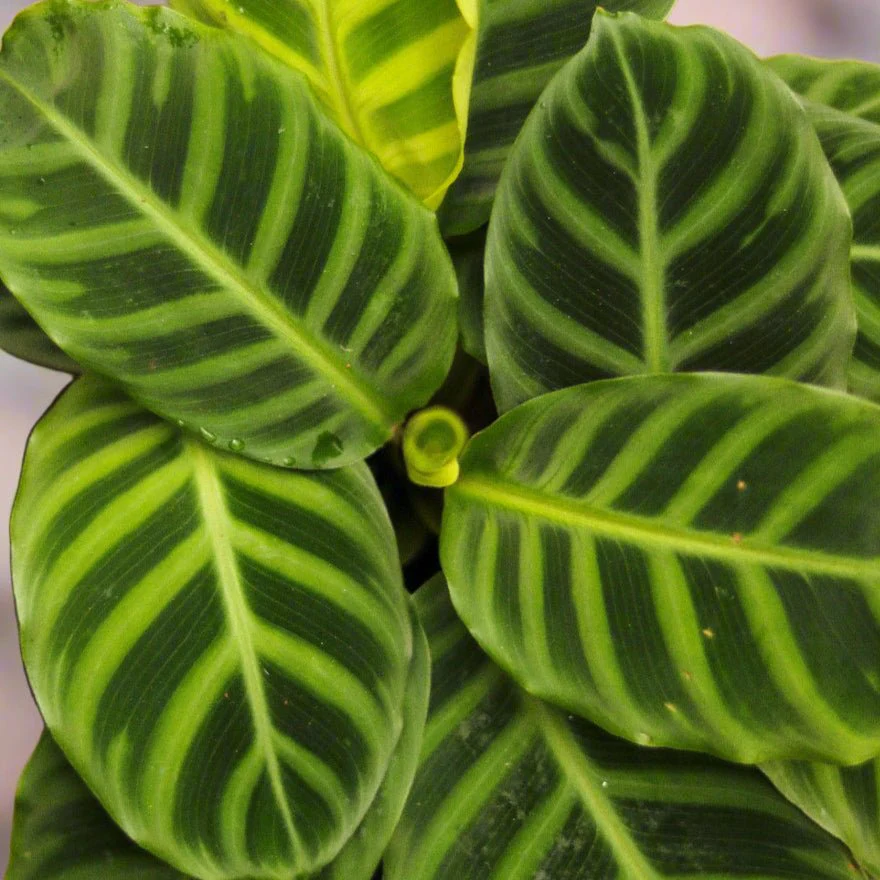-
Detail
Calathea Zebrina — The Striking Zebra Plant
Calathea zebrina, commonly known as the Zebra Plant, is a visually captivating member of the Marantaceae family, renowned for its velvety, ovate leaves marked with light and dark green stripes that mimic the patterns of a zebra. Native to southeastern Brazil, this tropical plant is prized for its foliage and unique habit of nyctinasty—leaf movement in response to daily light cycles. Watch as its leaves subtly shift during the day and fold inward at night, creating a dynamic living display.
Ideal for those who appreciate bold foliage and rhythmic plant behavior, Calathea zebrina thrives in bright, indirect light, consistently moist soil, and high humidity—conditions that reflect its rainforest origins.
Plant Profile
- Botanical Name: Calathea zebrina
- Common Names: Zebra Plant, Zebrina
- Family: Marantaceae
- Native Range: Brazil (specifically southeastern regions), part of tropical South America
Care Guide
- Care Level: Moderate
- Light: Best in bright indirect light, but tolerant of medium light and dappled shade. Avoid direct sun to prevent leaf scorching.
- Water: Keep soil consistently moist but not soggy. Let the top ½ inch dry out slightly between waterings. Use filtered, distilled, or rainwater to avoid mineral buildup, as Calatheas are sensitive to salts and chlorine.
- Humidity: High humidity is essential. Use a humidifier or place on a pebble tray if indoor air is dry.
- Temperature: Prefers warm conditions—60–85°F. Keep away from cold drafts and sudden temperature changes.
- Soil: Use a peat-rich, well-draining mix with added perlite or coco coir. Slightly acidic pH (5.5–6.5) is ideal.
- Fertilizer: Feed biweekly during spring and summer with a balanced, diluted liquid fertilizer (e.g., 10-10-10 or 20-20-20).
- Pruning: Remove any yellow or damaged leaves at the base to encourage healthy growth.
- Propagation: Best propagated through rhizome division during repotting.
- Growth Habit: Upright and bushy; typically reaches 18–24 inches tall. Repot every 1–2 years to refresh soil and accommodate root growth.
- Toxicity: Non-toxic to both pets and humans. Still, we always recommend keeping plants out of reach of curious pets or children.
-
- Aeschynanthus (Lipstick Plant)
- Aglaonema
- Alocasia (Elephant Ear Plant)
- Anthurium
- Begonia
- Calathea
- Epipremnum - Pothos
- Fern Collection
- Ficus
- Hoya (Waxplant)
- Maranta (Prayer Plant)
- Monstera
- Oxalis
- Peperomia
- Philodendron
- Non-Trailing Philodendron
- Vining Philodendron
- Snake Plant (Dracena/Sanseveria)
- Scindapsus
- Tradescantia
-




